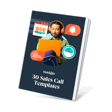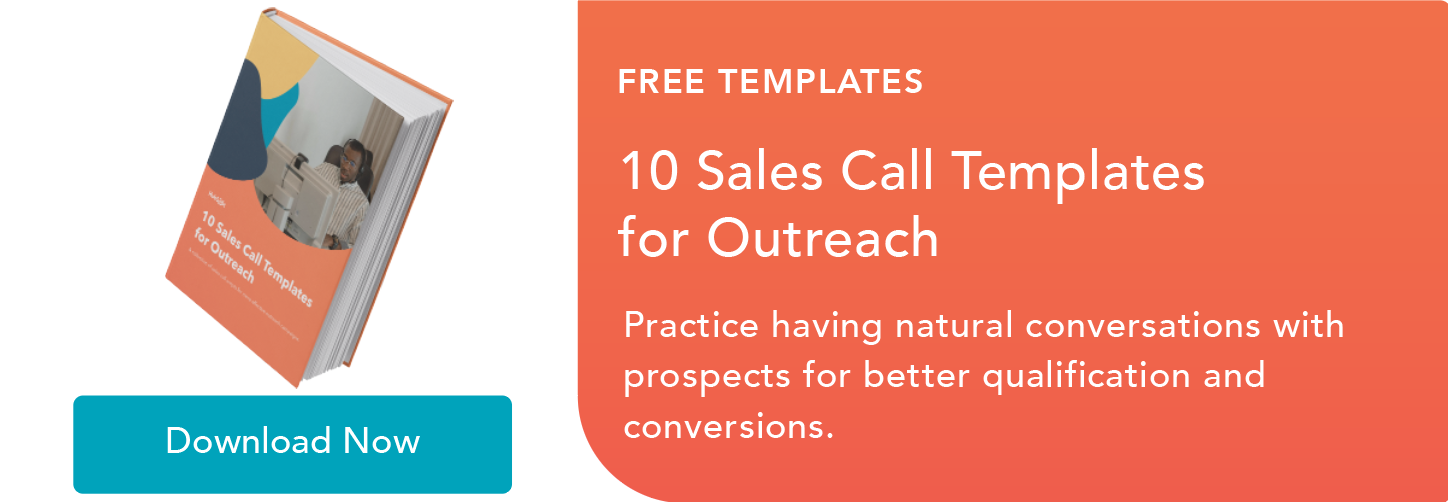
It’s okay to reach out to good-fit prospects who haven’t converted on your website yet. You just have to do it correctly. The key to warm calling is to be efficient, effective, and add value in the first 15 seconds. That’s right — only 15 seconds.
Now this isn't the only type of call you can make to prospects, but it may be the type of call you choose over alternatives.
What makes warm calls different?
Cold Calling vs. Warm Calling

The main difference between cold calling and warm calling is the level of familiarity and engagement with the prospect. Cold calling involves reaching out to completely unknown individuals who have had no prior interaction with the company, while warm calling involves contacting leads who have shown some level of interest or engagement, such as filling out a form or attending an event.
Warm calling typically has a higher conversion rate as there is an existing foundation for the conversation, making establishing rapport and building a relationship easier.
Hot Calling vs. Warm Calling
In contrast to warm calling — whether your prospect has converted on the website or your call is the first touch point — hot calling is when you know the prospect is ready to buy. They've submitted a form or emailed you and said, "I've been doing some research, and I know your solution is right for me."
Because they're eager and on the cusp of a decision, there's little need to "warm them up," it changes the focus of the conversation from relationship-building (though that's still important too!) into evaluating budget, need, and timing so you can close the sale.
In essence, give the people what they want, and don't beat around the bush.
Effective Warm Calling Tips
You won't always have the luxury of hot leads ready to talk to you and purchase. However, the following tips will help you enter into a conversation as you gauge level of interest:
1. Identify good fit companies.
The best prospects are the ones that look like your best customers. They’ll have similar pain, which means they’ll be easier to sell to and have higher retention rates. Study your buyer personas and learn to recognize your ideal buyer quickly. Review your customer base and identify key similarities between your most successful clients so you have a finely honed sense of what to look for.
One caveat: Don’t just focus on the whales. While it’s important to identify your largest target accounts as early in the year as possible, whales don’t come around often. Concentrate on understanding your business’ bread and butter — the type of customer that buys again and again.
2. Research the company.
Preparation is essential in warm calling — after all, you can’t deliver value if you don’t know what your prospect cares about. I use LinkedIn to read a bit about the company and collect specific information.
At a minimum, you should know how many years the company’s been in business, the number of employees, their location, and their value proposition. This may sound obvious, but knowing these basics is important. It helps you determine the type of problems this business is likely to face and tailor your introduction. A 10-person company’s business pain is very different from a 500-person company’s pain.
3. Research the company’s executives.
I always do research to find out if I know any of my prospective companies’ senior executives or am connected to people who do. I want to find any information I can that’ll make it easier to connect — for example, whether he’s a Midwestern football fanatic or she’s a San Diegan surfer.
I dig for educational background, I examine their LinkedIn photos for clues to their personality, and I try to determine the most critical problems an executive in this role would have.
4. Perfect your opening.
Calling an executive is theater. You have 15 seconds to capture their attention and demonstrate value.
My call opening is: “Hi Chuck, this is Dan from HubSpot.” Then I’ll pause and wait for them to respond.
It’s important to sound powerful and in control. The prospect may not have any idea who you are or what your company provides. It’s crucial to sound assertive — prospects are more likely to respond to someone who’s confident and authoritative than a clearly nervous rep.
5. Be human.
A sales rep’s secret weapons are voice tone and a sense of humor. Your voice tone can put people at ease or on edge, and an ability to make people laugh will go farther in making them trust you than any sales pitch.
Prospects are extremely busy, so be as pleasant as possible and show that you understand the demands of their positions. Smile when you’re warm calling (they’ll be able to hear it!), especially if it’s early in the morning.
6. Prepare your talking points ahead of time.
Referencing a piece of specific, non-generic information and asking a great question establishes a level of trust and opens the door for a professional conversation.
The key is to get as detailed as possible on a topic with which the executive is familiar. For example, here’s a talking point I could use:
“I saw that you posted a blog article last week on cybersecurity at your company with a really intriguing title. I read it twice, and the paragraph about X strategy was really interesting. I thought I’d pick up the phone to talk with you to see if it was successful.”
Do you think she’s ever had a call like this? This hyper-tailored opening changes the game. It compliments the prospect, engages her right away, and leads to follow-up questions about why the company chose this strategy, whether it succeeded or failed, what they plan to do next, and how you can help.
7. Ask open-ended questions.
Even though you know the prospect is a good fit, you still need to assess their interest and need. By asking open-ended questions instead of yes/no questions, you're prompting the prospect to better engage with the conversation. This gives you an insight into understanding what matters to them so you can better help.
8. Listen for triggering events or pain.
As you guide the conversation with open-ended questions, you should be digging for their pain points, the things that keep them awake at night. These are the things that your product/service may be able to solve for, and if you can prove this in their words, you're more likely to win them over.
9. Keep the call under five minutes.
Even though you may find that your product is a great fit, a warm call is still an interruption. Use your best judgment if the conversation is flowing well, but be respectful of your prospect’s time. After five minutes, ask, “Do you have a few more minutes, or should I email you information?”
Your first call is just an opening, so don’t worry about cramming in as much information as possible. Find out which other stakeholders should be included on the email, then let your prospect know that you’ll be their point of contact for solving their business pain.
10. Leave a voicemail.
There's a good chance your prospect won't pick up. When that happens, you might be tempted to immediately end the call and move on to the next one. Don't do that. Voicemails can be a valuable touch point even if they don't prompt a call-back.
Why? Because you're getting an opportunity to add value and build your credibility.
Here are a few ways to leave a voicemail that'll accomplish those goals:
- Offer one quick tip and say you're happy to share more if your prospect is interested.
- Foreshadow a helpful strategy, resource, or expert you're going to share with them via email (see the next tip).
11. Follow up with an email.
Following up with an email enhances your visibility. If you actually spoke to the buyer, they're probably going to open your message now that your name is familiar to them. If they didn't answer but listened to your voicemail, they'll recognize your name as well. And if they didn't do either, at least you'll increase the odds of connecting with them by trying another channel.
In your email, thank them for their time and provide additional ideas for solving their biggest business pain. I recommend personalizing your message with a short video — it's easy to record one on your webcam using Soapbox, a free tool from Wistia.
12. Call again.
I recommend calling four times in 12 days. This cadence doesn't cross the line into "harassment" territory, but it does give you a pretty good shot of connecting with your prospect if they have any interest in talking to you.
Don't forget to vary the times at which you call. Maybe the buyer is always slammed in the morning or goes into focus mode every day starting at 3 p.m. Trying them at different points in the day helps you catch them when they're most receptive.
Personally, I like to make calls in the morning before the craziness of a workday hits an executive’s desk — from 7:30 a.m. to 8:20 a.m. local time. If you call earlier, you’re more likely to catch them at their desks. About 25% of the time, the executive picks up.
13. Define a tangible next step.
Every communication you have with a prospect should be designed to drive the sales process forward or determine if you should disqualify them. Include one clear ask in your follow up email so your prospect knows what’s coming next. Even if the response is negative, you’ve laid the foundation for a future relationship.
14. Have a colleague call you.
There's no better way to know what works and what falls flat than having those strategies used on you. With that in mind, ask another salesperson on your team to call you. Pretend you're a typical prospect.
Take notes on the words and questions they use, your reactions, and how effective their CTA is. Incorporate those takeaways into your own approach. And do the opposite, as well: Call them and then ask for their feedback. Practice makes perfect.
Master the Warm Call
Cold calling doesn’t work like it used to, but that doesn’t mean any unsolicited phone call is ineffective. Instead, take the time to carefully research good fit prospects before offering them specific, targeted value, and reap the benefits of warm calling.
Editor's note: This article was originally published in May 2020 and has been updated for comprehensiveness.
Sales Calls












